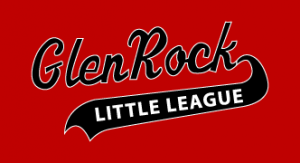GRBSA Injury Prevention Statement
GRBSA Statement on Potential Injury in Sports Participation
The GRBSA mission is to promote skill development, sportsmanship, and a love for the game of baseball/softball in a safe and nurturing environment. The organization takes the safety of our players very serious, and wants to ensure that injuries are minimized. For that reason, a number of measures to keep your player safe are available.
The top five acute injuries experienced in youth baseball/softball are:
- *Being hit by a pitch in any part of the body including the head
- *Being hit by a thrown ball that is not expected or difficult to handle
- *Being hit by a ball that is batted in play on the ground and takes an unexpected bounce
- *Sliding into a base and injuring a joint or sustaining a laceration/scrape on the thigh or knee
- *Feeling acute arm/shoulder pain after making a hard throw as a pitcher or fielder
A specific injury that has become widely feared, yet very rare, is being struck by a hit ball in the chest as a pitcher, or a pitched ball as a batter. Whichever injury you feel is important to you, here are some action steps you can take to minimize the chance of injury. Most of the equipment mentioned can be purchased at any sporting goods store such as Sports Authority, Modells or Dick’s Sporting Goods.
1. Face Mask
Used frequently in softball, a fielding mask is commonly used to prevent balls from causing facial injuries. They are made of plastic and are held onto the face by head straps
2. Body Armor
Recently developed, you can now buy undershirts and pants that have foam in areas most vulnerable to sustaining an injury. There are also body-part-specific protective gear for hitters. An example of this is the elbow/tricep strap that protects a batter from getting hit on the arm/elbow. Knee pads can also be worn to prevent scrapes under the knee caps.
3. Sliding Pants
Sliding pants go under the normal baseball pants or softball shorts that protect the skin on the upper leg from being bruised/scraped/lacerated during sliding.
4. Heart Guard
A heart guard is meant mainly for pitchers, but can easily be used by any player on the field. The purpose of the heart guard is to prevent cardiac arrest if a player in the field is struck in the chest with a batted ball or pitched ball as a batter. The heart guard is usually made of plastic and slitely curved. It is strapped around the torso, over the heart, but under the uniform where it is hidden.
5. Proper Warm Up
In many cases, teams start throwing right away and go into game-play very quickly. In order to prevent injuries of the throwing arm or leg muscles it important to make sure that your player goes through the proper warm up before a game or practice. In somer cases, there is very little time for warm up before a game- especially during the week. However, the minimum warm-up should include a 30 to 60 second stretch of the major muscles of the legs and arms, a brief jog or 20 to 30 jumping jacks, and 10 short throws and 10 long throws of light to medium intensity.
The GRBSA hopes that this information is helpful in navigating the different types of injuries sustained in baseball and softball, and what measures are available to prevent or minimize their effect. If you have any questions you may contact the GRBSA at [email protected].
